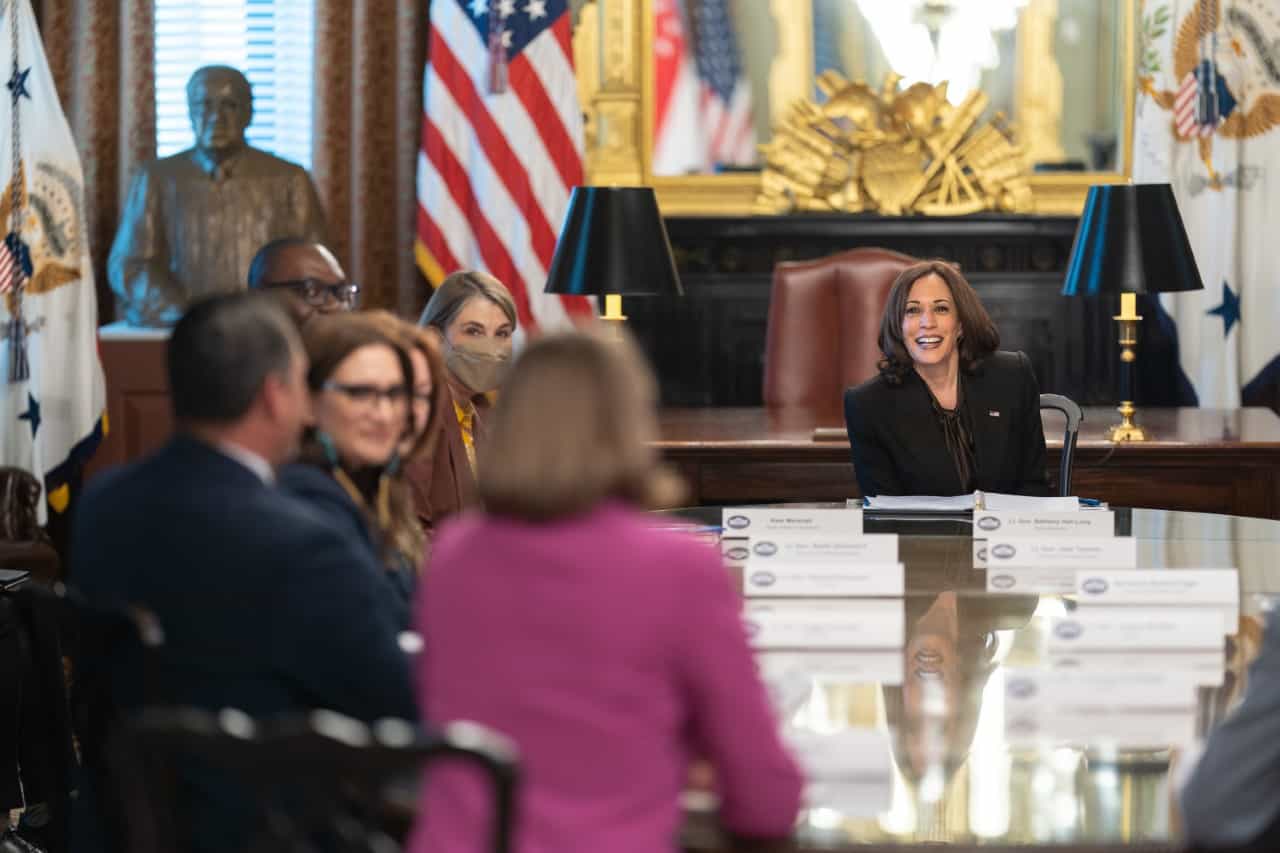
MONTPELIER, Vt. – On Tuesday, March 29, 2022, Lt. Governor Molly Gray, with Lt. Governors from across the United States, met with Vice President Kamala Harris to discuss the needs of Vermont coming out of the pandemic, particularly rural broadband access.
The Lt. Governor also made the case that broadband access must be considered the modern day highway for human rights, including the right to health, education, and government participation.
While at the White House, Lt. Governor Gray discussed how, at the start of the pandemic, one fourth of Vermont geographically could not get online, including roughly 60,000 homes and residents. Gray thanked the Biden-Harris Administration for the more than $100 million in American Rescue Plan Act funds to help address the broadband gap as well as the additional $100 million in Infrastructure Investment and Jobs Act funds to expand coverage.
Already, Vermont has used this funding to launch a Vermont Community Broadband Board, which is prepared to grant over $116 million to communication union districts entities similar to a municipality that are dedicated to rapidly deploying fiber to the home in rural areas. Funds have also supported various emergency connectivity initiatives, including the emergency deployment of more than 1325 iPads and over 550 WiFi boosters to Vermonters in need of telehealth access in all 14 counties.
“Vermont’s ability to recover stronger from this pandemic depends on federal funds to close the broadband gap, Vermont is deeply grateful to the Biden-Harris Administration for their leadership in this critical area,” said Lt. Governor Gray. “Access to telehealth, online learning, remote work, civic engagement, as well as mental health and support services cannot be further prolonged. Vermonters in unserved communities cannot wait another ten years, five years, or three years for broadband access. Federal funding will support the critical work necessary to end their wait and provide further broadband access.”